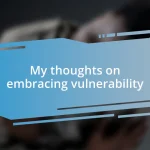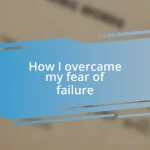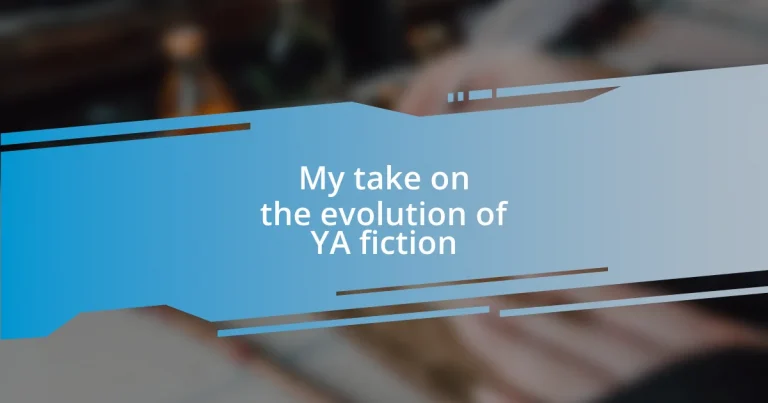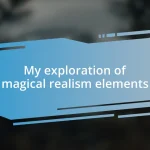Key takeaways:
- YA fiction originated in the 1960s-70s, evolving to address complex themes like identity, social justice, and mental health.
- Diversity in YA literature has significantly increased, promoting empathy and representation, and stimulating impactful discussions on social issues.
- Future trends in YA fiction include enhanced technology integration, deeper exploration of intersectional identities, and a rising focus on mental health narratives.

History of YA fiction
The origins of young adult (YA) fiction can be traced back to the 1960s and 1970s, when authors began addressing the complex themes and experiences of adolescence. I remember first picking up “Are You There God? It’s Me, Margaret” by Judy Blume as a teenager. The raw honesty in Blume’s writing resonated deeply with me, making me wonder if she could somehow peek into my own struggles with identity and growing up.
In the years that followed, the genre evolved significantly, incorporating diverse voices and stories. The 1990s saw the rise of series like “The Babysitters Club,” which provided a sense of camaraderie and shared experience among young readers. I often found solace in those tales, thinking, “Wow, are these girls really going through the same things I am?” This sense of connection has always fueled the growth of YA fiction.
As the millennium approached, the genre blossomed into a powerful cultural phenomenon, with stories addressing issues like mental health, social justice, and identity. Personally, reading “The Hunger Games” was transformative for me; it wasn’t just entertainment—it made me contemplate societal structures and personal agency. Have you ever found a book that shifted your perspective on life? For me, these moments reaffirmed how vital YA literature has become in speaking to the heart of young readers.
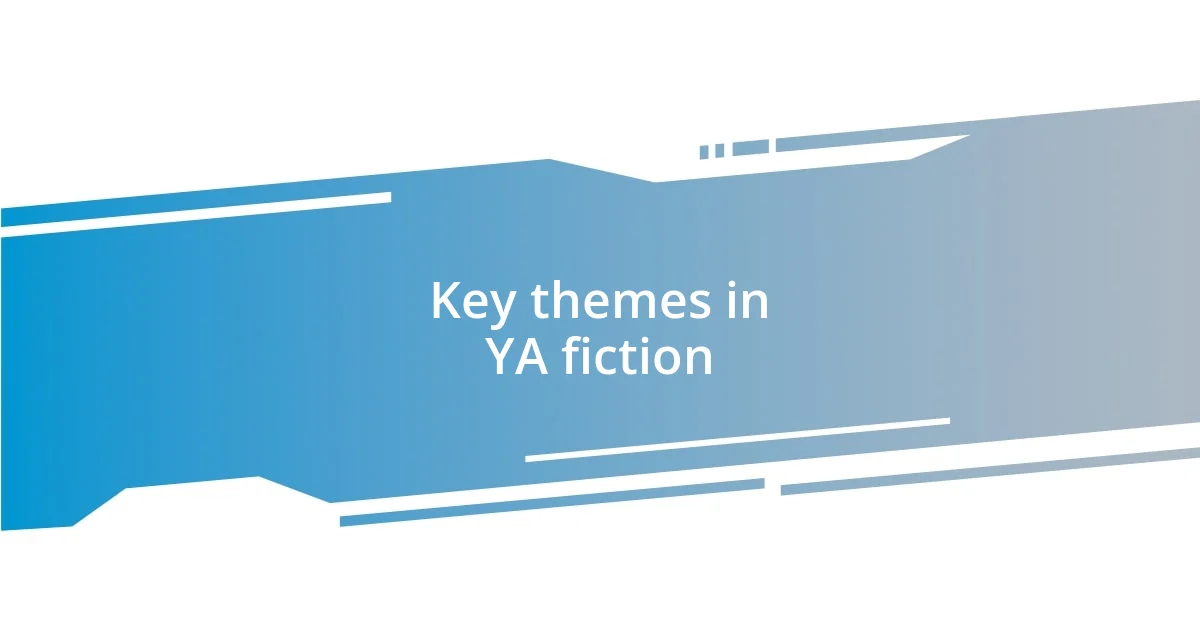
Key themes in YA fiction
The key themes in YA fiction often revolve around identity, belonging, and the tumultuous journey of self-discovery. When I reflect on my experiences, I recognize how powerful it is for young readers to see characters grapple with these very issues. For instance, books that explore gender identity resonate strongly with readers seeking to understand their own journeys—a topic I’ve seen become more prevalent and impactful in recent years.
Romantic relationships frequently take center stage, diving into the excitement and complexities of first loves and heartbreaks. I vividly remember feeling butterflies reading about a crush and relating to the characters’ joys and woes. This enchantment often mirrors real-life experiences, creating a sense of shared emotion that readers cherish. It’s fascinating to see how these relationships evolve into important narratives that address themes of consent, healthy communication, and mutual respect.
Societal issues and personal struggles are also integral to the narrative landscape of YA. Many stories confront mental health, cultural diversity, and social justice, making readers more empathetic and aware. I can recall the impact of “The Perks of Being a Wallflower” on my understanding of depression and teenage angst. Have you felt the weight of such themes? This engagement prompts readers to think critically and fosters a deeper connection, making them feel less alone in their experiences.
| Theme | Description |
|---|---|
| Identity | Exploration of self and personal growth, often addressing issues like gender and cultural identity. |
| Romantic Relationships | Portrayal of first loves and heartbreaks, emphasizing emotional connections and healthy dynamics. |
| Societal Issues | Confrontation of topics such as mental health, social justice, and diversity, fostering awareness and empathy. |
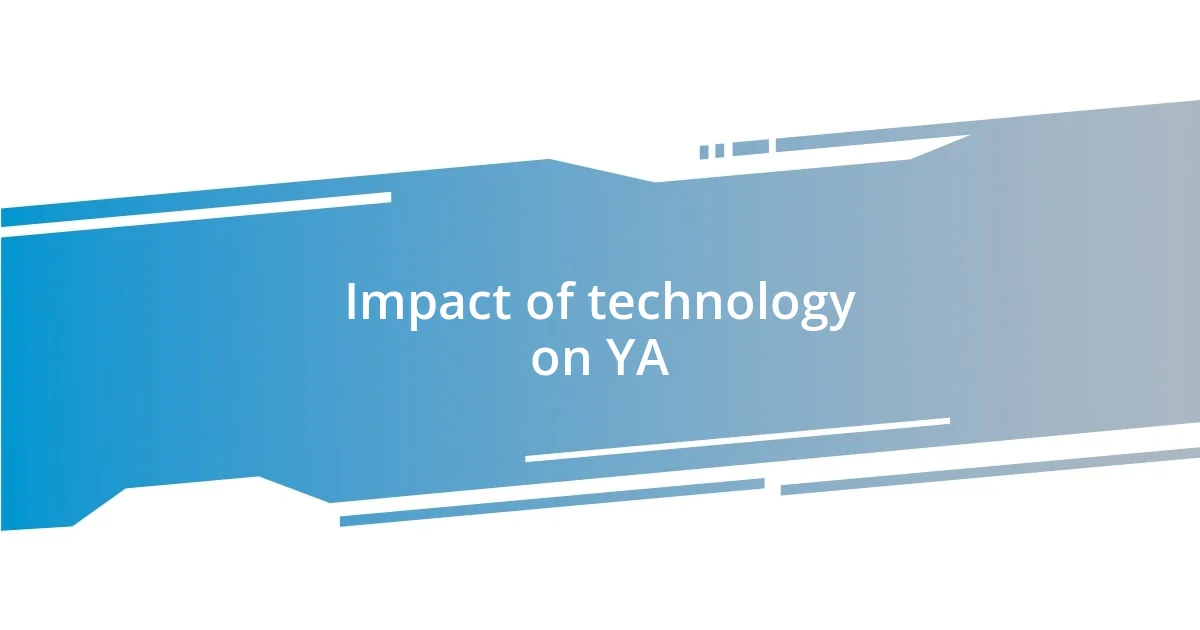
Impact of technology on YA
The influence of technology on YA fiction has been nothing short of transformative. I think back to my own teenage years when the internet was just beginning to blossom. It opened up a world of online communities where I could discuss my favorite books with fellow fans, expanding my understanding of the genre and its nuances. Now, I see how platforms like social media allow readers to connect directly with authors and share their reactions in real-time, creating a vibrant dialogue that enriches the reading experience.
- Accessibility of Content: Readers can easily discover and access a vast array of YA titles through e-books, audiobooks, and online retailers, breaking down traditional barriers.
- Online Communities: Platforms like BookTube and Bookstagram have created spaces for readers to engage, share recommendations, and foster a sense of belonging.
- Diverse Voices: Technology has facilitated the emergence of self-publishing, empowering diverse authors to share their stories, which broadens the landscape of YA fiction.
- Interactive Storytelling: Some authors are experimenting with multimedia formats that can include social media and apps to create immersive experiences, capturing the attention of a tech-savvy generation.
As I witness this evolution, I can’t help but feel excited about where YA fiction is headed. The integration of technology in publishing and reading habits not only democratizes access to literature but also shapes the narratives portrayed within the genre. I remember the first time I engaged with a story that included social media elements, and how that made the characters feel more relatable and real. It’s exhilarating to think about how technology can deepen a reader’s emotional connection to the story and its characters.
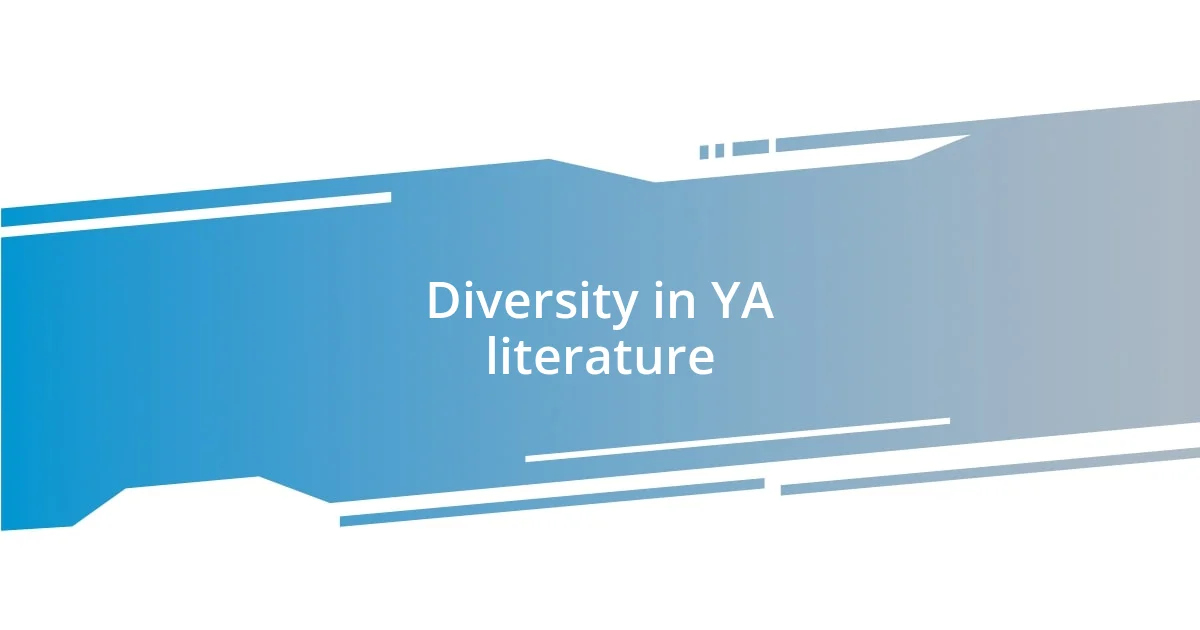
Diversity in YA literature
Diversity in YA literature has blossomed significantly in recent years, offering readers a more accurate reflection of our multifaceted world. I recall discovering stories that featured characters from different backgrounds, cultures, and experiences—each one illuminating a different facet of life. It’s astonishing how these narratives help dismantle stereotypes and broaden perspectives, enabling young readers to see themselves and others in their favorite books.
When I stumbled across a novel portraying a queer protagonist navigating their identity, it resonated with me deeply. These characters aren’t mere plot devices; they carry the weight of real emotions and challenges that reflect our own struggles and triumphs. Why is this important? Because representation matters. It fosters a sense of belonging and validates experiences that some might think are singular or unique. I believe that when young readers encounter diverse voices, they cultivate empathy and understanding, empowering them to connect with people from all walks of life.
Moreover, exploring diverse themes and characters can ignite conversations around pressing social issues among readers. I remember discussing the implications of race and privilege with my friends after reading a poignant YA novel that dealt with these complexities. It opened up a dialogue that wasn’t just about the book but about our connection to society itself. Isn’t it incredible to think that fiction can inspire such impactful discussions? It’s this kind of engagement that shows how YA literature has continually evolved to reflect and shape the world in which we live.
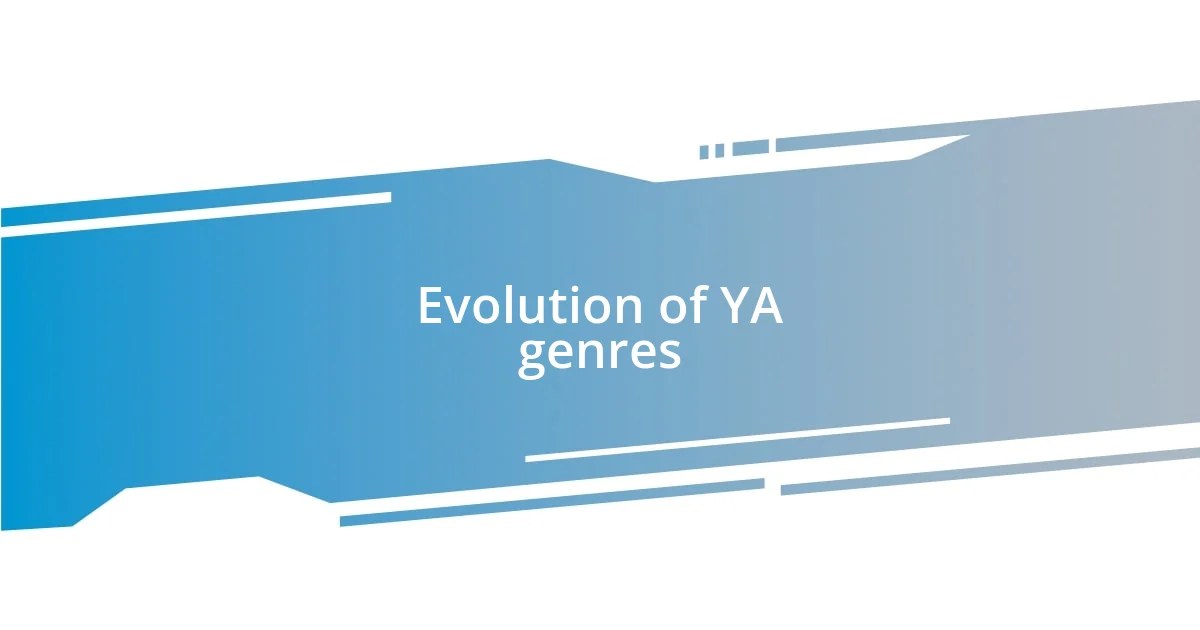
Evolution of YA genres
The evolution of YA genres reflects changing societal norms and interests, moving from simple coming-of-age stories to complex narratives that address a wide range of issues. I remember when I first picked up a YA book that tackled mental health; it felt revolutionary. These stories not only entertained but also validated my own struggles, making me realize I wasn’t alone in my feelings. Wouldn’t it be amazing if more young readers found solace in characters who mirror their own battles?
As genres have diversified, we’ve seen the rise of sub-genres like dystopian, fantasy, and graphic novels within YA literature. I got lost in a fantasy series that transported me to another world, but it was the relatable themes of friendship and sacrifice woven through the pages that truly captivated me. It was intriguing to see how these whimsical tales could tackle real-life questions, prompting me to reflect on my values and choices. Isn’t it interesting how the fantastical can often lead us to confront our very realities?
Contemporary issues such as identity, social justice, and climate change are now integral to YA narratives. When I discovered a gripping YA novel centered on environmental activism, it inspired me to take action in my own community. This blend of fiction and activism not only reflects current teen concerns but also empowers them to instigate change. It leaves me wondering: how will future generations of YA novels continue to evolve with society?
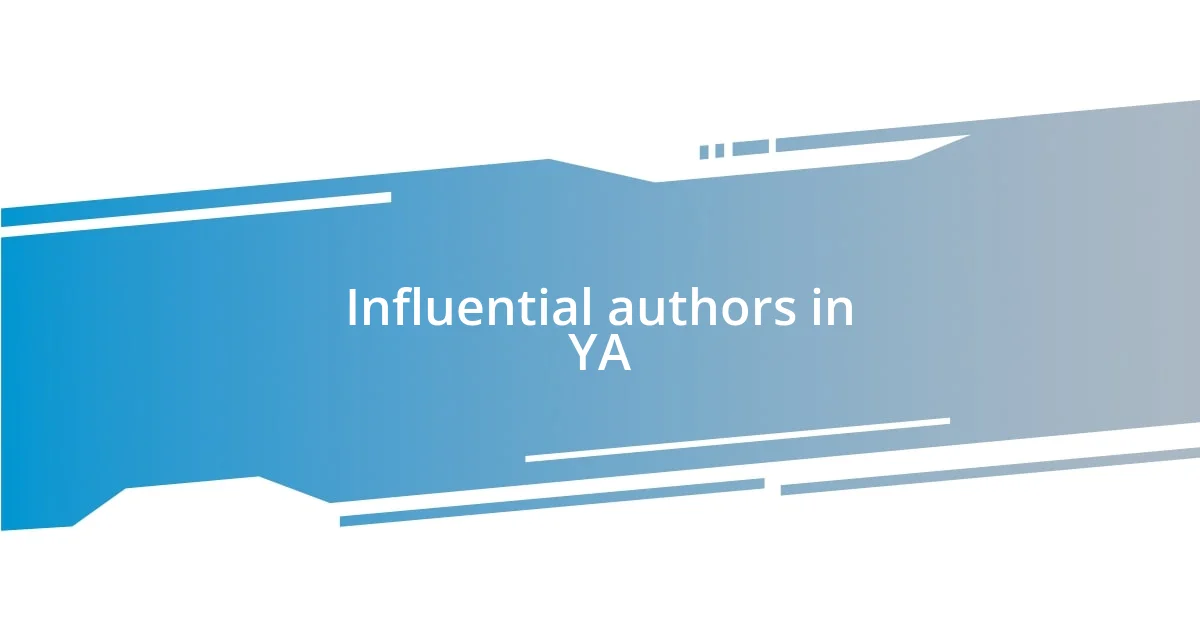
Influential authors in YA
J.K. Rowling’s Harry Potter series undoubtedly reshaped YA literature, drawing in a generation of readers with its magical world and relatable themes of friendship and perseverance. When I first read about Harry and his adventures, I was captivated not just by the spells and wizardry, but by the characters’ struggles with acceptance and their identities. It made me wonder how many teens felt a similar connection—caught between their own worlds and the adventures they dreamt of, just like Harry.
Another key figure is John Green, whose novels, like “The Fault in Our Stars,” bring raw emotions to the forefront. I vividly remember sobbing through his poignant exploration of love and illness; it wasn’t just a story, but a reflection on the fleeting nature of life and relationships. His ability to weave complex themes into accessible narratives invites readers to grapple with their own realities, making them feel less alone in their thoughts. Doesn’t it strike you as remarkable how Green’s words can resonate with so many, sparking crucial conversations about love, loss, and growing up?
Then there’s Angie Thomas, whose groundbreaking work “The Hate U Give” has turned the spotlight on essential social issues. I recall the flood of emotions as I followed Starr’s journey; it felt like my own experiences echoing through her words. Deeply embedded in her narrative are elements of racial identity and activism, prompting young readers to see the urgent realities of the world around them. How empowering is it to have stories that challenge us to confront difficult truths while inspiring change? Thomas, through her writing, emphasizes that YA literature holds the power not only to entertain but also to educate and advocate, igniting voices in a way that’s simply unforgettable.

Future trends in YA fiction
As we look towards the future of YA fiction, I believe we’ll see a deeper integration of technology into storytelling. Imagine the possibilities of augmented reality or interactive narratives where readers can experience a story in real-time. I can picture myself engaging with a character through my phone, feeling more connected than ever to their journey. How would that change the way we perceive character development and plot progression?
Another trend that excites me is the increasing focus on intersectionality within characters’ identities. I often find myself reflecting on how multiculturism plays a crucial role in shaping narratives. For instance, stories that intricately weave together diverse backgrounds can offer a richer, more nuanced understanding of the world. Isn’t it fascinating how sharing varied perspectives can not only entertain but also educate young readers about empathy and inclusion?
Moreover, the rise of mental health topics in YA fiction is something I feel passionate about. I remember reading a book where the protagonist openly struggled with anxiety; it resonated with my own experiences in a profound way. It’s a powerful reminder that as we move forward, stories can continue to break stigmas and give voice to what many are hesitant to speak about. How can we harness this momentum to foster even more conversations around mental health in the future? I’m eager to see how authors will tackle these complex issues with courage and authenticity, allowing readers to feel seen and understood.






